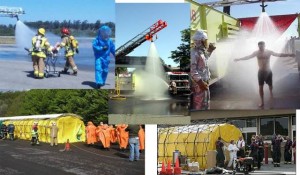The U.S. Environmental Protection Agency's draftEPA "Protective Action Guide" (PAG), posted on its website April 15, allows hundreds to thousands of times more radiation in disasters than the agency had previously allowed. Americans have until Monday, July 15 to comment* even though the EPA made the new PAG effective immediately.
According to EPA's own data, the new PAGs will result in exponentially higher radiation-induced fatal cancers than the current goal of one in ten thousand to one in a million Americans.
In various exposure scenarios listed in the report, depending on which radionuclide, the resultant cancer rates would claim several out of ten, one in eight, one in six – even as low as one in 1.7.
The EPA PAG's justification for these astronomically higher numbers is that during a disaster like a nuclear meltdown, a terrorist 'dirty bomb,' or a nuclear detonation, all limits currently for radiation exposure in air, water, food and soil are targets for revision.
"These PAGs are basically admitting that contamination levels could be so high from such an event that they may not be able to be cleaned up to existing standards such as the drinking water contamination levels," says Maryland-based Nuclear Information and Resource Service. "Thus, EPA would permit unacceptably high radiation risks at each of the stages after nuclear disaster without even suggesting any steps to prevent or minimize the potential disasters."
Depending on the radionuclide, the increased limit eclipse's EPA's long-established levels. Those limits were created in the Comprehensive Environmental Response, Compensation, and Liability Act of 1980 (CERCLA).
Various draft PAG exposure scenarios utilizing the EPA's own numbers show fatal cancers at levels hundreds to thousands of times higher than with CERCLA at Superfund cleanup sites across the country.
EPA says that their PAG does not affect Superfund sites across the country. But what the PAG does do, albeit in a non-binding advisory fashion, is create vastly loosened limits for domestic nuclear meltdowns and radiation waste accidents including during transportation. "Mobile Chernobyls" as anti-nuclear activists call them, would be exempt from strict radiation limits.
So would any number of private industry nuclear emergencies including pharmaceutical fires. First responders from firefighters to police and National Guard will use the EPA's PAG extreme radiation limits to gauge the risk to its own personnel. They in turn will use these life-threatening levels to advise the public.
